Emma Jameson – 14 August, 2014
Light Cord seems to take as its starting point the unique environment in which the works are displayed. LOFT is a wonderfully quirky gallery space that seems to rebel against expectations of the normative blank, white, cube in both its appearance and the experience that this creates for the gallery visitor. Rather than being smooth and white, the walls of LOFT are an eclectic melange of various retro interior decoration trends of different eras.
Auckland
Scarlett Cibilich, Priya Patel, Larissa Goodwin
Light Cord
Curated by Hannah Valentine
26 July - 2 August 2014
The physicality (actual or projected) of the art object in its various states of flux is explored in the first exhibition organised by LOFT, a new project-focussed, artist-run initiative in Auckland.
Light Cord, curated by Hannah Valentine, seems to take as its starting point the unique environment in which the works are displayed. LOFT is a wonderfully quirky gallery space that seems to rebel against expectations of the normative blank, white, cube in both its appearance and the experience that this creates for the gallery visitor.
Located on the second level of an outdoor shed at the back of an old villa, the visitor enters the gallery by climbing up a rickety, narrow staircase. At the top of this ascent, the visitor’s eyes are greeted with a visual feast of vibrant tones and textures. Rather than being smooth and white, the walls of LOFT are an eclectic melange of various retro interior decoration trends of different eras. A flamboyant pink and orange paisley patterned wallpaper competes for the viewer’s attention with the textured swathes of plaster applied in thick impasto on the walls above it; the dark-coloured skirting boards on the floor provide chromatic solidity work with the lighter coloured floorboards and ceiling beams to contain this flurry of perceptive activity within an enclosed and intimate space.
Such a space could either be an inspirational dream or a frustrating nightmare for a curator in that it requires an extraordinary ability to negotiate various visual features simultaneously so that artworks are not overwhelmed by the space in which they are displayed. In Light Cord, Hannah Valentine has expertly tested her curatorial abilities so as to create a visually stimulating and perceptually enriching exhibition in which the display space and the works within it are engaged in a dynamic and reciprocal relationship, emphasising/bringing out qualities in the other. This interest in how shapes are informed by their surroundings and changing circumstances that take place is evident in the notes for the exhibition, which features a beautiful passage from Mei-Mei Berssenbrugge’s poetry in Hello the Roses: “Thoughts are sent out by one rock informing other rocks as to the nature of its changing environment, the angle of the sun and temperatures cooling as night falls, and even its (loosely called) emotional tone changes…. Thoughts meet and merge with other thoughts sent out, say, from foliage and other entities.”
All of the pieces within this exhibition work within and with the particular qualities of their environment. This is particularly evident in Scarlett Cibilich’s Mixer (glass), in which the sweeps of polyfiller and acrylic on the glass create transient moments of reflection, transparency, and opaqueness. The pink and orange tones of the gallery walls seem to be simultaneously reflected and absorbed within the work, the grey painted layers diluting this reflection and trapping the tones within the layers of the work. Our impression changes depending where we stand in relation to the work, the dappled areas of colour changing in tonal quality as the light hits sections of the pane with different intensities, and the gestural swathes of paint on top of the pane of glass seeming to assume a vitality of their own in generating a luminosity that seems to be both dependent and independent of its surroundings.
Similarly, Cibilich’s canvas works seem to organically evolve within the environment of the gallery space. Mixer (canvas) is a sculptural exploration of the manipulative abilities of a two dimensional object, with thick layers of white and coral paint coating layers of tape that have been folded over on top of card. The three dimensionality created by this thick layering of paint on top of the crinkles of the tape prompts a tactile response from the viewer: we want to run our hands over the various folds of the picture plane, feeling the contrast between the rough and smooth textured planes and peeling apart the layers that form the varyingly deep creases across the work.
The thickly applied white and coral paint is reminiscent of the gestural passages in which the plaster has been thickly applied to the walls, creating an interactive and textural symbiosis between the work and its immediate environment. This can similarly be seen in her work Untitled, in which the frayed edges of the un-stretched canvas create a loosely defined parameter between the work and the paisley wallpaper. As in Mixer, the orange and pink tones of the work and the sweeps of gestural paint complement and echo the rich colour and dynamic form of the wallpaper, yet the remnants of a thickly applied stroke of paint in the upper right corner emphasise the materiality of the canvas and its textural differentiation from the smooth wall on which it is displayed.
This play with materiality and how it can elude viewer expectations is deftly explored in Priya Patel’s digital prints. calacatta-extra-marble and calacatta-belgia seem to have the solidity of marble, contrasting against the flamboyance of the wallpaper and the undulating lines of the plaster in its smoothness and restful muted tonality. Yet what initially seems concrete and knowable is eventually revealed to be mere surface appearance, acting as a sort of trompe l’oeil of materiality within the gallery space. What seems to be marble is in fact a digital reproduction, and the falsity of its assumed materiality is revealed to the viewer through its wood framing, which serves to underscore its flatness and matte quality. This play between actual and appearance, two-dimensionality and three-dimensionality is effectively experimented with in calacatta-extra-marble, in which the gap between the print and the frame seems to simultaneously suggest a two-dimensional surface and three-dimensional form. Materiality then, is not a concrete absolute, but rather is open to states of flux within our subjective perception and the changing forces of its environment.
Larissa Goodwin’s miniature sculptures are interesting explorations within this theme, testing how materials can work with and against each other so as to produce different tactile effects and different experiences of tangible volume. In Goldfinch a piece of white clay curls upwards from a piece of white fabric that is folded over on the floor. Placed around it in an almost geometrical formation are small pieces of yellow fabric, which seem to parallel the appearance of the piece of clay. Within this material environment, the clay is rendered simultaneously solid and malleable, weighted and weightless, assuming the soft qualities of the fabric whilst also retaining its own independent form. Baz almost appears to be an organic growth or extension of the wallpaper, its porous holes seemingly created through a release of bubbling activity within its core that extends beyond the confines of the sculptural object to the pinpricked gallery walls.
Light Cord is a dynamic and interactive working of the potentials of a specific gallery space to highlight the aesthetic and corporeal qualities of a range of sculpted, painted, or printed art works. These works seem to respond to and react against their unique environment, providing an array of visual, textural and physical interactions that are revealed to the audience through an organic viewing process. Valentine’s first curatorial project manages to skilfully balance a cohesive exhibition theme with interesting and engaging perceptual variation and I look forward to future projects. LOFT is an exciting and welcomed addition to the Auckland art scene (especially in the aftermath of PLAZA’s closure), providing a viewing space in which emerging artists can display their material and in which the gallery visitor can be enriched by a wholly different and distinctive viewing experience.
Emma Jameson is the 2014 EyeContact Artists Alliance Writing Intern, a programme made possible with generous funding from the ASB Community Trust.
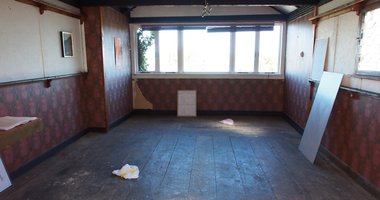
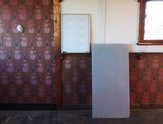

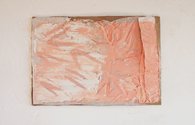


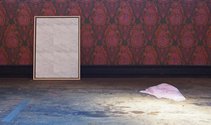

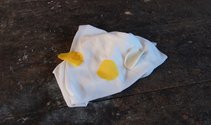
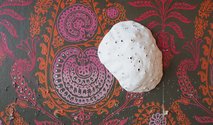
 Two Rooms presents a program of residencies and projects
Two Rooms presents a program of residencies and projects Advertising in this column
Advertising in this column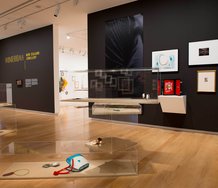
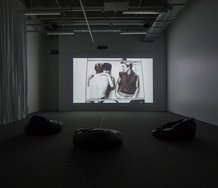


This Discussion has 0 comments.
Comment
Participate
Register to Participate.
Sign in
Sign in to an existing account.